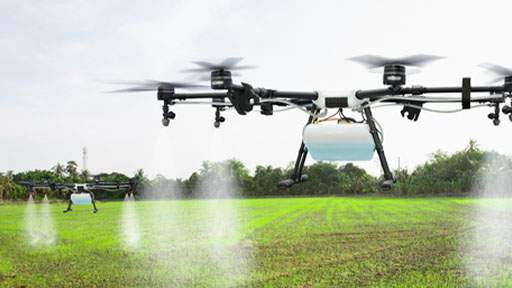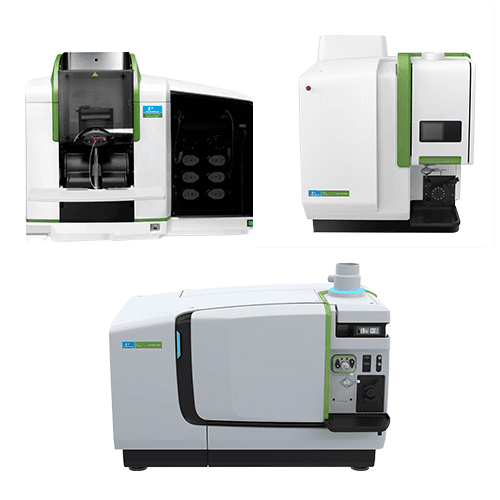
Agriculture Chemicals Testing Technologies

Fertilizer Mining to Markets Infographic

Chemicals Symposium – Agrochemicals Testing Hub

The Next Wave of Agricultural Materials Innovation is on the Horizon


Since the earliest beginnings of agriculture, humans have been challenged with maximizing agricultural output, while preventing losses due to over-farming, weather, disease, pests, and other adversities. Agricultural chemicals, commonly referred to as agrochemicals (agchem or agrichemicals), are used to protect crops and improve their growth and fertility. As the global human population continues to grow, it becomes even more crucial to improve the production and quality of our foods, heightening the importance of fertilizers, both mined from our earth and chemical blends, and pesticides like herbicides, insecticides and fungicides.
Agrochemical producers require robust analytical testing programs that span from research, product development and registration through the production process to final product. Discover PerkinElmer analytical solutions for reliable, quality agrochemical testing.
Fertilizers are essential to crop nutrition, healthy agricultural productivity and food production. Innovation is important to the industry to improve worldwide food availability and quality amidst decreasing agricultural land, constant climate change, and increasing agrochemical resistant organisms. The pressures to innovate are real; it is estimated that only one new agrochemical out of 160,000 candidate molecules ever makes it to market.
Mining operations are challenged to perform an array of analytical tests on ore and raw materials like N, P, and K, to quickly and with high levels of accuracy confirm physical properties, impurities and mineral levels to determine mining location viability. Robust analytical solutions are required to stand up to the harsh, corrosive environment created during these mining sample and raw material analyses. Many inorganic and confirmation analyses are performed, as active ingredient synthesis labs, R&D chemists and manufacturers are tasked with feedstock, formulation, blend composition, and final product testing.
Fertilizer companies must get their formulas right to ensure their customers' investment in their land or greenhouse, soil and crops. Some fertilizer manufacturers provide testing services to report on soil nutrition to further dial-in crop nutrients for their customers. Regardless of the phase of fertilizer production, labs are challenged by the complexities of blend composition, purification, formulation optimization, toxicity, and storage stability testing and require simplified workflows and easy to use software to help them create efficiencies and increase productivity.
Agrochemicals such as insecticides, herbicides, fungicides, and seed treatments help control pests and disease carriers and are also applied to augment crops to increase agricultural yield. Research and development chemists, pesticide synthesis and QA/QC operators are constantly evolving their products to address changing national and international laws, regulations and a changing climate. Testing for the potential downstream environmental effects to soil and water is becoming increasingly important to safeguard our environment.
Increasing adoption of biobased materials, or biopesticides are at the heart of today’s organic farming and environmentally friendly agricultural care. Although the EPA requires composition, toxicity and characterization testing and results, biopesticides are brought to market faster, often in less than 1 year.
Regardless of the type of agrochemicals being produced, active ingredient manufacturers, pesticide and fertilizer manufacturers, blenders, and contract labs employ a wide array of effective and robust chemicals analyses to keep up with changing regulations, safer crop protection, bringing products to market faster with automation and other tools, while battling supply chain shortages in raw materials and other pandemic related effects.
Although crop nutrition is critical to providing safe and healthy food to our growing population, growing consumer awareness of the potential ecological risks of agrochemicals is contributing to a change in the landscape of fertilizer and pesticides materials and formulations. After agrochemical application, concerns arise from chemical retention in soil, physiochemical properties, runoff into water sources, and post-application residual pesticide activity – all of which are driving innovations in bio-based formulations like biopesticides.
A host of analytical techniques are utilized by commercial and government soil testing laboratories, as well as industrial agrochemicals manufacturers, who routinely test soil, plants and media for nutrients content, retention and studies like exposure characterization. These analyses enable informed decisions to improve fertilizer and pesticide formulations and application practices. At key times of the year, soil testing labs and chemicals manufacturers may be required to analyze several thousand samples per day, necessitating robust, high throughput sample preparation, testing solutions and methods, many of which are prescribed by regulations.
The diverse analytical testing landscape of environmental testing labs requires a wide range of analytical solutions to meet the needs of purposeful inorganic and organic additives and contaminants.

Agriculture Chemicals Testing Technologies

Fertilizer Mining to Markets Infographic

Chemicals Symposium – Agrochemicals Testing Hub

The Next Wave of Agricultural Materials Innovation is on the Horizon

HPLC: Determination of Urea Content in Urea- Based Fertilizers in Accordance with AOAC Official Method 2003.14
NutriControl and PerkinElmer Collaborate to Serve-up Agricultural and Nutritional Analyses

Analysis of Trace Elements in Fertilizer with the Avio 220 Max ICP-OES

GC Instruments

Atomic Spectroscopy

Chromatography

Molecular Spectroscopy

Thermal Analysis

Consumables & Accessories



Laboratory Services